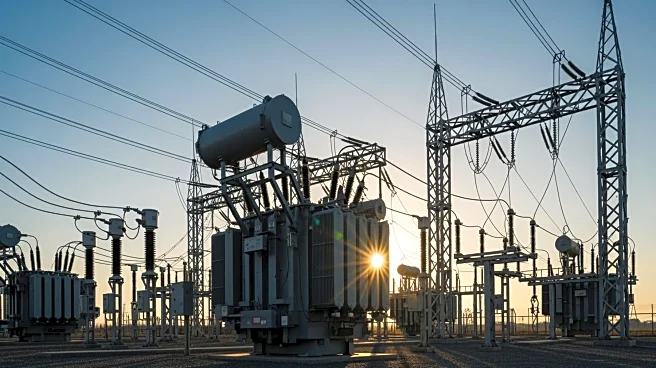What's Happening?
Texas-New Mexico Power Company (TNMP), a subsidiary of TXNM Energy, has filed a base rate review with the Public Utility Commission of Texas. This filing seeks to recover $2.8 billion of rate base as of June
30, 2025, with a requested return on equity of 10.4% and a 47.54% equity ratio. The current rates are based on a rate base of $835 million, an allowed return on equity of 9.65%, and a 45% equity ratio. The filing includes increased operations and maintenance costs, changes in deferred federal income tax amortizations, and updates to depreciation rates. Additionally, TNMP is requesting $20.5 million in rate rider recovery for Hurricane Beryl restoration costs, to be recovered over five years. If approved, new rates are expected to be effective by mid-2026.
Why It's Important?
The base rate review by TNMP is significant as it impacts energy costs for consumers in Texas. The proposed changes reflect the company's growth and increased operational costs, which could lead to higher energy bills for residents and businesses. The request for recovery of hurricane restoration costs highlights the financial burden of natural disasters on utility companies and their customers. Approval of the rate review could set a precedent for future filings by other energy providers, influencing the regulatory landscape and energy pricing in Texas.
What's Next?
The Public Utility Commission of Texas will review TNMP's filing, and stakeholders, including consumer advocacy groups and industry representatives, may provide input. The decision will determine whether the proposed rates and recovery costs are justified, impacting future energy pricing and infrastructure investments. The outcome could influence TNMP's financial strategy and operations, as well as the broader energy market in Texas.
Beyond the Headlines
The filing underscores the challenges utility companies face in balancing infrastructure investments with consumer affordability. It raises questions about the sustainability of energy pricing models amid increasing operational costs and environmental impacts. The request for hurricane restoration cost recovery highlights the need for resilient infrastructure and proactive disaster management strategies.













